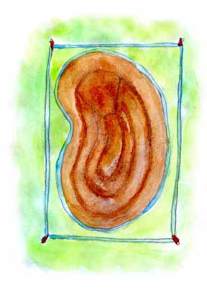Basic HTML Version



20cm
35cm
35cm
30cm
30cm
30cm
Sloped
area for
beach
Inner ring to be
covered by liner
and form edge
2m
3m
Use
surplus soil to
make an embankment
near the pond. For more
info see Enhancing Your
Wildlife Pond, page
24.
making your wildlife pond
8
Any sized pond is beneficial to
local wildlife, though amphibians
will prefer ponds over 1-2 metres
in diameter.
Where to put your pond:
Your pond will
need a lot of sun, especially in early spring.
Frogs prefer warm and shallow water to lay
spawn. A bit of shade is not a bad thing, but be
wary not to put ponds underneath big trees:
the falling leaves can clog up ponds in autumn.
Shape:
Generally, it’s a good idea to add
some shape to your pond edges - don’t go for
straight sides, instead add some curves. This
will help add to the number of microhabitats
found in your pond, and makes it more
attractive to wildlife. Many people go for the
kidney-shaped pond style. Use a rope or hose
to mark the pond edges before you start
digging. Don’t forget to add a sloping aspect to
at least one end of the pond - this will ensure
wildlife can get in and out.
Depth:
A pond should ideally have a section
at least 60cm deep to protect certain
animals (like frogs) from weather extremes
(particularly in winter).
Shelved areas:
Shallow, shelved areas are
good for basking invertebrates and tadpoles,
and can be the most diverse and abundant
area of a pond.
Underlay
Liner
Trench

